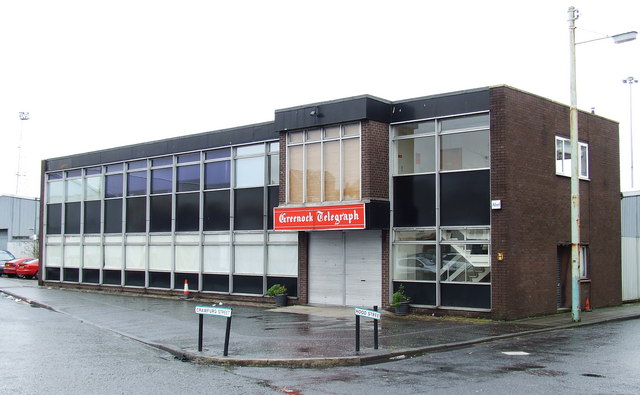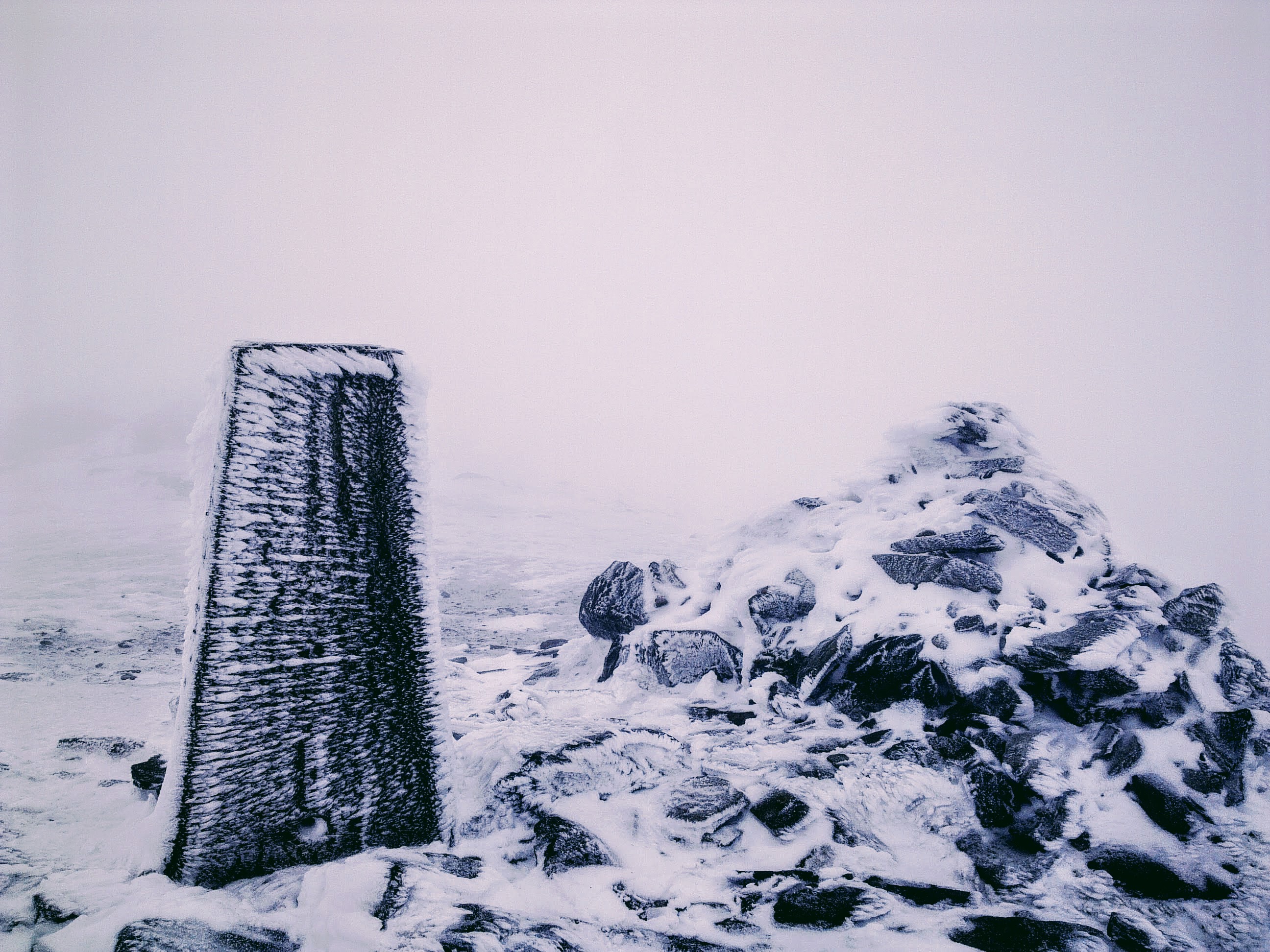|
Inverkip Power Station
Inverkip power station was an oil-fired power station on the Inverclyde coast, Firth of Clyde, west coast of Scotland. It was closer to Wemyss Bay than Inverkip, and dominated the local area with its chimney, the third tallest chimney in the UK and Scotland's tallest free-standing structure. In common with other power stations in Scotland it lacked cooling towers; instead, sea water was used as a coolant. The station consisted of three generating units with a combined total rating of 2028 megawatts (MW). History Construction began in 1970 for the then South of Scotland Electricity Board (SSEB). It was to be Scotland's first oil-fired power station. The soaring price of oil as a result of the 1973 oil crisis meant that by the time construction was completed generation was uneconomical. It was never utilised commercially, with 1200 MW kept in reserve and the remaining capacity being used to satisfy peak demand. It was only used at peak capacity during the miners' strike of ... [...More Info...] [...Related Items...] OR: [Wikipedia] [Google] [Baidu] |
Inverclyde
Inverclyde (, , , "mouth of the Clyde") is one of 32 council areas used for local government in Scotland. Together with the East Renfrewshire and Renfrewshire council areas, Inverclyde forms part of the historic county of Renfrewshire, which currently exists as a registration county and lieutenancy area. Inverclyde is located in the west central Lowlands. It borders the North Ayrshire and Renfrewshire council areas, and is otherwise surrounded by the Firth of Clyde. Inverclyde was formerly one of nineteen districts within Strathclyde Region, from 1975 until 1996. Prior to 1975, Inverclyde was governed as part of the local government county of Renfrewshire, comprising the burghs of Greenock, Port Glasgow and Gourock, and the former fifth district of the county. Its landward area is bordered by the Kelly, North and South Routen burns to the southwest (separating Wemyss Bay and Skelmorlie, North Ayrshire), part of the River Gryfe and the Finlaystone Burn to the south-east. ... [...More Info...] [...Related Items...] OR: [Wikipedia] [Google] [Baidu] |
Greenock Telegraph
The ''Greenock Telegraph'' is a local daily newspaper serving Inverclyde (the council area containing the towns of Gourock, Greenock and Port Glasgow), Scotland. Founded in 1857, it was the first halfpenny daily newspaper in Britain. It was for a time ''Greenock Telegraph and Clyde Shipping Gazette'', owing to the massive amount of maritime traffic moving in and out of Greenock's harbours. This information is still published, but only as a column entry. Originally based in Charles Street, Greenock, the printing works were bombed during the Greenock Blitz in May 1941. However the printers worked on to produce emergency editions, despite sustaining multiple cuts from the shattered glass lodged in the presses. It is known locally as ''The Tele'' (although this is pronounced ''Tilly''). Several features such as ''Viator'' (Latin for ''traveller'') have formed part of the ''Telegraph'' for decades. Although it concerns itself primarily with news from Inverclyde, West Renfr ... [...More Info...] [...Related Items...] OR: [Wikipedia] [Google] [Baidu] |
1976 Establishments In Scotland
Events January * January 2 – The International Covenant on Economic, Social and Cultural Rights enters into force. * January 5 – The Pol Pot regime proclaims a new constitution for Democratic Kampuchea. * January 18 – Full diplomatic relations are established between Bangladesh and Pakistan 5 years after the Bangladesh Liberation War. * January 27 ** The United States vetoes a United Nations resolution that calls for an independent Palestinian state. ** The First Battle of Amgala (1976), First Battle of Amgala breaks out between Morocco and Algeria in the Spanish Sahara. February * February 4 ** The 1976 Winter Olympics begin in Innsbruck, Austria. ** The 7.5 1976 Guatemala earthquake, Guatemala earthquake affects Guatemala and Honduras with a maximum Mercalli intensity of IX (''Violent''), leaving 23,000 dead and 76,000 injured. * February 9 – The Australian Defence Force is formed by unification of the Australian Army, the Royal Australian Navy and the Royal Au ... [...More Info...] [...Related Items...] OR: [Wikipedia] [Google] [Baidu] |
Buildings And Structures Demolished In 2013
A building or edifice is an enclosed structure with a roof, walls and windows, usually standing permanently in one place, such as a house or factory. Buildings come in a variety of sizes, shapes, and functions, and have been adapted throughout history for numerous factors, from building materials available, to weather conditions, land prices, ground conditions, specific uses, prestige, and aesthetic reasons. To better understand the concept, see ''Nonbuilding structure'' for contrast. Buildings serve several societal needs – occupancy, primarily as shelter from weather, security, living space, privacy, to store belongings, and to comfortably live and work. A building as a shelter represents a physical separation of the human habitat (a place of comfort and safety) from the ''outside'' (a place that may be harsh and harmful at times). buildings have been objects or canvasses of much artistic expression. In recent years, interest in sustainable planning and building practi ... [...More Info...] [...Related Items...] OR: [Wikipedia] [Google] [Baidu] |
Energy Infrastructure Completed In 1976
Energy () is the quantitative property that is transferred to a body or to a physical system, recognizable in the performance of work and in the form of heat and light. Energy is a conserved quantity—the law of conservation of energy states that energy can be converted in form, but not created or destroyed. The unit of measurement for energy in the International System of Units (SI) is the joule (J). Forms of energy include the kinetic energy of a moving object, the potential energy stored by an object (for instance due to its position in a field), the elastic energy stored in a solid object, chemical energy associated with chemical reactions, the radiant energy carried by electromagnetic radiation, the internal energy contained within a thermodynamic system, and rest energy associated with an object's rest mass. These are not mutually exclusive. All living organisms constantly take in and release energy. The Earth's climate and ecosystems processes are driven primarily ... [...More Info...] [...Related Items...] OR: [Wikipedia] [Google] [Baidu] |
Demolished Power Stations In The United Kingdom
Demolition (also known as razing and wrecking) is the science and engineering in safely and efficiently tearing down buildings and other artificial structures. Demolition contrasts with deconstruction, which involves taking a building apart while carefully preserving valuable elements for reuse purposes. For small buildings, such as houses, that are only two or three stories high, demolition is a rather simple process. The building is pulled down either manually or mechanically using large hydraulic equipment: elevated work platforms, cranes, excavators or bulldozers. Larger buildings may require the use of a wrecking ball, a heavy weight on a cable that is swung by a crane into the side of the buildings. Wrecking balls are especially effective against masonry, but are less easily controlled and often less efficient than other methods. Newer methods may use rotational hydraulic shears and silenced rockbreakers attached to excavators to cut or break through wood, steel, a ... [...More Info...] [...Related Items...] OR: [Wikipedia] [Google] [Baidu] |
Buildings And Structures In Inverclyde
A building or edifice is an enclosed structure with a roof, walls and windows, usually standing permanently in one place, such as a house or factory. Buildings come in a variety of sizes, shapes, and functions, and have been adapted throughout history for numerous factors, from building materials available, to weather conditions, land prices, ground conditions, specific uses, prestige, and aesthetic reasons. To better understand the concept, see ''Nonbuilding structure'' for contrast. Buildings serve several societal needs – occupancy, primarily as shelter from weather, security, living space, privacy, to store belongings, and to comfortably live and work. A building as a shelter represents a physical separation of the human habitat (a place of comfort and safety) from the ''outside'' (a place that may be harsh and harmful at times). buildings have been objects or canvasses of much artistic expression. In recent years, interest in sustainable planning and building practi ... [...More Info...] [...Related Items...] OR: [Wikipedia] [Google] [Baidu] |
Ben Vorlich (Loch Lomond)
Ben Vorlich () is a mountain in the Arrochar Alps of Argyll, in the Southern Highlands of Scotland. It reaches , making it a Munro. It lies between Loch Lomond and Loch Sloy. Ben Vorlich is the highest point of the historic county of Dunbartonshire. The A82 road and the West Highland railway line run on the eastern side of Ben Vorlich, above the shoreline of Loch Lomond. The peak forms a north–south ridge on the western side of Loch Lomond, with a subsidiary ridge known as ''Little Hills'' running from the summit east down to the shores of the loch. There are three small summits around 800 m apart along the main ridge; the central one is the highest, though the southern one has a trig point A triangulation station, also known as a trigonometrical point, and sometimes informally as a trig, is a fixed surveying station, used in geodetic surveying and other surveying projects in its vicinity. The station is usually set up by a map .... References Mu ... [...More Info...] [...Related Items...] OR: [Wikipedia] [Google] [Baidu] |
British Energy
British Energy was the UK's largest electricity generation company by volume, before being taken over by Électricité de France (EDF) in 2009. British Energy operated eight former UK state-owned nuclear power stations and one coal-fired power station. From 1 July 2010 the rebranding of British Energy locations and communications to EDF Energy commenced as part of its incorporation into the parent group, following around 17 months of dual branding. This was concluded with the renaming of the operating company from ''British Energy Generation Limited'' to ''EDF Energy Nuclear Generation Limited'' on 1 July 2011. Structure In 2009, the British Energy subsidiary group was structured accordingly: * British Energy Group plc: holding company, a wholly owned subsidiary of EDF S.A. ** British Energy Generation Ltd: dominant subsidiary; owned and ran the large power stations, was licensed to operate nuclear power stations. ** District Energy Ltd: owned four modern 10MWe natural gas-fue ... [...More Info...] [...Related Items...] OR: [Wikipedia] [Google] [Baidu] |
Nuclear Electric
Nuclear Electric was a nuclear power generation company in the United Kingdom. It was formed in 1990 as part of the privatisation process of the UK Electricity Supply Industry. In 1996, it was amalgamated into a new company – British Energy, which was eventually purchased by EDF Energy in 2010. History Background (before 1990) Before 1990, the generation and transmission activities in England and Wales were under the responsibility of Central Electricity Generating Board (CEGB). The present electricity market in the UK was built upon the break-up of the CEGB into four separate companies in the 1990s. Its generation (or upstream) activities were transferred to three generating companies – PowerGen, National Power, and Nuclear Electric (later British Energy, eventually ' EDF Energy'); and its transmission (or downstream) activities to – the National Grid Company. Nuclear Electric (1990–1995) When the CEGB split up was announced, its power stations were decided to ... [...More Info...] [...Related Items...] OR: [Wikipedia] [Google] [Baidu] |







